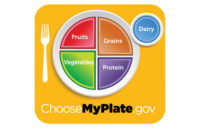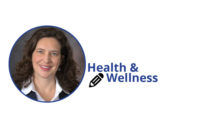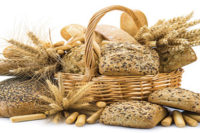From a young age, we’ve been told that eating protein will help us grow tall and strong. I’ve always taken this as a truth, but never questioned it. Now my children are asking me why I’m feeding them foods like bread, chicken and apples. Providing simple answers for growing minds isn’t always easy.
We’ve associated foods like meats, seafood and eggs as being great sources of protein. But what is protein, and why is it so important? Protein foods include any foods made from meat, poultry, seafood, beans, peas, eggs, soy products, nuts and seeds. The amount of protein needed per individual depends on age, sex and level of physical activity, but is typically around 50 grams daily per person. Although most Americans consume enough foods from this group, they could be making leaner and more varied choices, according to the report for the pending 2015 Dietary Guidelines for Americans.
Exercise—paired with a diet containing adequate to high protein—can aid weight loss; protein is vital for health and body maintenance and also helps regulate appetite and cravings. What’s more, proteins function as building blocks for bones, muscles, cartilage, skin and blood. B vitamins found in protein serve several roles: They help the body release energy, play a vital role in the function of the nervous system, aid in the formation of red blood cells and help build tissues.
Clearly, there are many health benefits of eating protein. However, not all foods high in protein are necessarily the best everyday choices.
The report by the Dietary Guidelines Advisory Committee (as part of the 2015 Dietary Guidelines for Americans development process) recommends a diet lower in red and processed meats. Although these foods do contain high levels of protein, they also contain high levels of saturated fat, which can lead to greater risk of heart disease, stroke and certain cancers.
In addition to lowering intake of red and processed meats, the guidelines also suggest a diet higher in vegetables, fruits, whole grains, legumes, nuts and seeds. You may be thinking, “That’s great, but where’d the protein go?” We’re trained to associate proteins with meats, but in the absence of meat, where do we get the protein necessary to sustain a healthy and balanced diet?
Nuts, seeds, beans and dairy are just some meatless foods that are great protein sources. Whole grains like barley, brown rice and wheat are also protein-packed. Grains contain carbohydrates to keep us fueled as well as small amounts of healthy fat and measurable amounts of protein.
One hard-boiled egg, for instance, contains 6 grams of protein. Compare that to a round, whole-wheat pita, which has 6.27 grams of protein, two slices of whole-wheat bread containing 7.97 total grams and 2 ounces of whole-wheat pasta ringing in at 8.34 grams of protein—all surpassing the hard-boiled egg (Whole Grains Council, Whole Grain Protein Power!, February 2014.)
Quinoa, a pseudo grain, is enjoying widely accepted merit as a superfood, mainly due to its high protein and fiber quality. A single cup of ready-to-eat quinoa has nearly 10 grams of protein and 5 grams of fiber, all at about 220 calories. Quinoa is considered a complete protein, which means it contains all amino acids.
Like protein, the amount of grain you need to eat depends on your age, sex and physical activity. As a general rule of thumb, at least half of all grains consumed should be whole grains, which will help with attaining lean protein needs. Combine these whole grains with fruits and vegetables, and you’ll be well on your way to a balanced diet.
For more information and tips for including grains in your diet, visit GrainFoodsFoundation.org.




